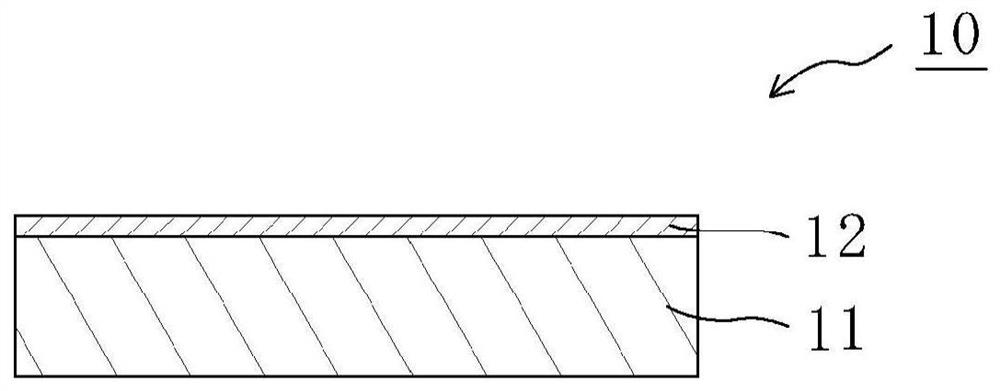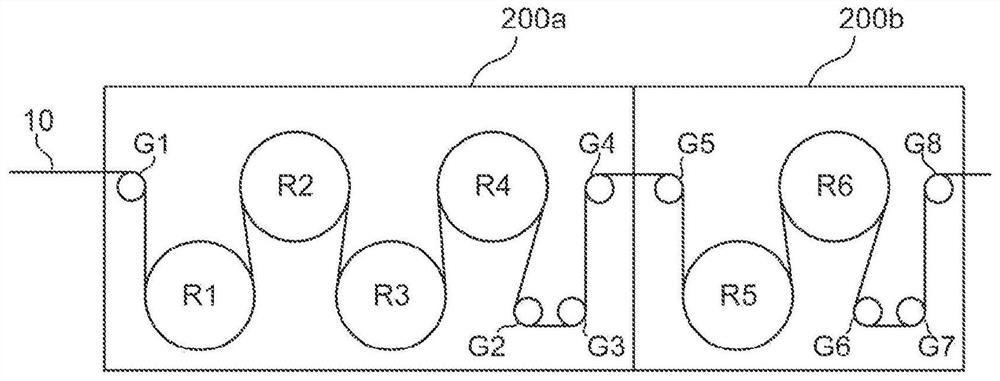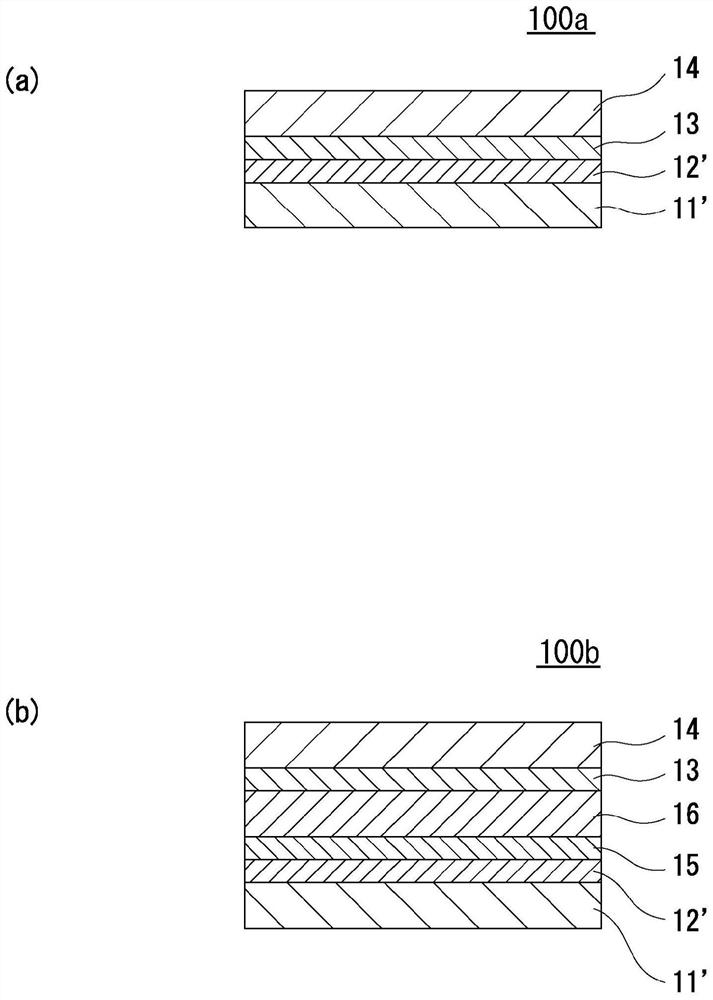Manufacturing method of optical laminate
A technology for optical laminates and manufacturing methods, applied in chemical instruments and methods, optics, optical components, etc., can solve the problems of reduced transparency of thermoplastic resin substrates, and achieve full crystallization and efficient crystallization effects
- Summary
- Abstract
- Description
- Claims
- Application Information
AI Technical Summary
Problems solved by technology
Method used
Image
Examples
Embodiment 1
[0104] As the thermoplastic resin substrate, amorphous polyethylene terephthalate (IPA copolymerized PET) having a thickness of 100 μm, a crystallinity index of 0 to 0.1, and 5 mol % of isophthalic acid units having a Tg of 75° C. copolymerized was used. The surface of the film was corona treated (58W / m 2 / min). Prepared to contain acetoacetyl-modified PVA (manufactured by Nippon Synthetic Chemical Industry Co., Ltd., trade name: GOHSEFIMER Z200, average degree of polymerization: 1200, degree of saponification: 98.5 mol% or more, degree of acetoacetylation: 5) at a ratio of 1:9 %) and PVA (average degree of polymerization: 4200, degree of saponification: 99.2 mol%), and with respect to 100 parts by weight of this PVA-based resin, 13 parts by weight of potassium iodide was added to prepare a PVA-based resin aqueous solution (PVA Resin-like concentration: 5.5% by weight). This aqueous solution was apply|coated to the corona-treated surface of a resin base material so that the ...
Embodiment 2
[0114] The temperature adjustment of the first roll R1 from the upstream side was turned off, the temperature of the rolls R2 to R4 was set to 90° C., and the contact time of the laminate and the heating rolls R2 to R4 was set to 3 seconds each (total: 9 seconds). 3 seconds (total: 6 seconds) for each of the contact times with the heating rollers R5 to R6, and hot air was sent so that the atmospheric temperature in the oven for the second crystallization treatment would be 100°C. An optical laminate was produced in the same manner as in Example 1 except for the wind.
Embodiment 3
[0116] The temperature of R5 is set to 105°C, and hot air is blown so that the atmospheric temperature in the oven for the first crystallization treatment becomes 95°C, and the atmospheric temperature in the oven for the second crystallization treatment becomes 95°C. An optical laminate was produced in the same manner as in Example 1, except that the hot air was blown at 100°C.
PUM
| Property | Measurement | Unit |
|---|---|---|
| glass transition temperature | aaaaa | aaaaa |
| glass transition temperature | aaaaa | aaaaa |
| thickness | aaaaa | aaaaa |
Abstract
Description
Claims
Application Information
 Login to View More
Login to View More - R&D
- Intellectual Property
- Life Sciences
- Materials
- Tech Scout
- Unparalleled Data Quality
- Higher Quality Content
- 60% Fewer Hallucinations
Browse by: Latest US Patents, China's latest patents, Technical Efficacy Thesaurus, Application Domain, Technology Topic, Popular Technical Reports.
© 2025 PatSnap. All rights reserved.Legal|Privacy policy|Modern Slavery Act Transparency Statement|Sitemap|About US| Contact US: help@patsnap.com



